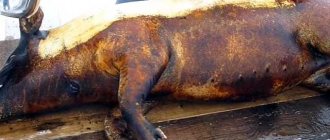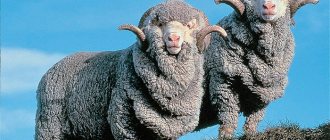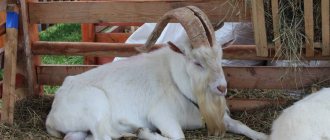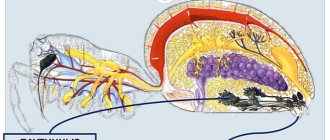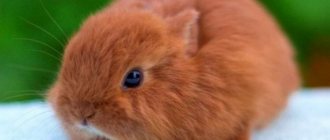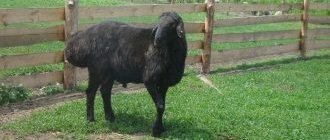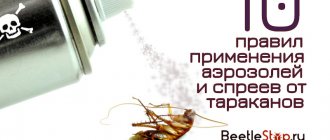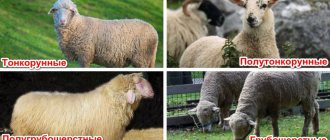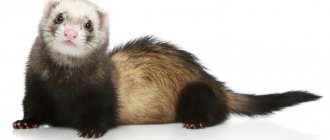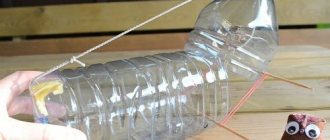Readers of the older generation probably still remember the posters “Scheme for cutting up a pork carcass” that hung in the meat departments of Soviet grocery stores. Some modern pig farmers who do not intend to sell the meat they raise may consider this kind of information unnecessary. However, knowing how to properly divide a carcass into pieces is very useful. This helps simplify the process of preparing the product for storage and correctly using it for culinary purposes.
Classic scheme for cutting a pork carcass
Rules for cutting pork carcass
Cutting parts of a pig carcass can be stored for a long time and sold separately. All parts of the pork body differ in taste, fat content and lard content.
The varietal cutting of a pork body is divided into two important stages. They include:
- Bleeding;
- The process of dividing into a separate part.
Timely removal of blood mass from a fresh carcass improves the taste and appearance of meat products. Experienced butchers claim that you can quickly get rid of blood by cutting the throat of a live animal. It is pre-laid on its side and tightly fixed.
However, in the future, the pork carcass must be suspended by the hind limbs using special equipment. This will increase the speed of blood flow from the cavity of large veins and arteries. If you hit a pig in the chest, you won’t be able to get rid of the excess blood quickly. A wound to the ribs provokes the appearance of many blood clots. Subsequently, the gutted body of the pig is soaked in cold water.
Before cutting, it is necessary to prepare a room where various manipulations to divide the pork carcass will be carried out. Attention must be paid to a tool that will allow you to cope with the meat and bones of the animal.
Important! Knives and an ax must first be sharpened so that the blades pass quickly and easily through thick leather.
Preparing for work
First, it is necessary to organize maximum bleeding of the carcass: if blood remains in the animal’s body, this will reduce the taste of the meat and reduce its shelf life. Blood flows out naturally if the piglet was initially (before slaughter) hung upside down, but not everyone has a suitable room and equipment for this. The owner of a private farmstead, as a rule, has to process a lying carcass. In this case, a certain amount of blood accumulates in the chest cavity, from where it is carefully scooped out, and the clots are removed using a clean, dry cloth (rinsing the internal cavities with water is strictly not recommended to avoid rapid spoilage of the meat).
Read more about the methods of slaughtering a pig and preparing the carcass for cutting in the article on our website.
Cutting usually takes place on a table or floor. In any case, you need to try to ensure that the process at least to a minimum extent complies with sanitary standards. To do this, the easiest way is to place a cleanly washed shield made from planed boards under the pig, or lay a new, whole oilcloth.
When cutting, it is important to comply with sanitary and hygienic requirements
In addition, you need to prepare in advance:
- several knives with a length of at least 15 cm and a width of 2 cm. The blades must be made of good quality steel and well sharpened;
- a one-handed saw and a small hatchet;
- several containers for meat and liver (basins or wide pans are suitable);
- scraps of clean cloth (paper towels can also come in handy);
- container with hot water;
- comfortable clothes for work, an apron and rubber gloves.
Traditional cutting method
There are many proven techniques for cutting meat carcasses. Let's consider a traditional method that will allow you to quickly and proportionally separate the muscle fibers and bone corset of a killed animal:
- Carefully separate the head in the cervical area. To do this you will need a sharp ax. After this manipulation, the carcass should hang slightly in an upright position. This will get rid of the remaining blood mass inside the capillaries and muscle fibers;
- We open the abdominal cavity. We make a deep incision in the upper part of the pectoral linea alba. Using a sharp knife blade, we continue it to the very bottom of the body. During this manipulation, we stick to the skin and try not to touch the internal organs;
- We remove the “abdominal apron”. It represents the muscles and fat layer in the peritoneum;
- We make a longitudinal cut. This area is located along the line of connection of the ribs;
- We remove all internal organs. When performing this action, special care must be taken. If you touch the area of the large intestine, its contents negatively affect the taste of meat products. We tie the esophagus with twine. The fact is that inside it there are remnants of chewed and undigested food. Now you can cut it above the intended dressing. Next, remove the lungs, liver, stomach and heart;
- We cut out all the internal fat, which is located around the perimeter of the abdominal cavity. Now you can remove the kidneys and bladder. It is important to be careful when removing the urethra and bladder contents. Pig urine has a sharp, specific odor;
- Clean the inside of the body well. If the product is planned to be stored for a long time, the intraperitoneal space can be rinsed with cold water. After this, the muscle fibers must be wiped with a dry cloth. If ichor continues to be released from the tissue, then quickly remove it with paper napkins. If these requirements are neglected, the risks of rapid proliferation of pathogenic microflora increase;
- Now you can start dividing half the carcass. We make a longitudinal incision along the perimeter of the entire spine. To do this you will need a sharp ax or hacksaw. When carrying out such actions, care must be taken;
- The final step will be to divide both parts into small elements. The carcass must be cooled within 4-5 hours after slaughter. During this time, the muscle fibers will become more elastic and pliable to the effects of a sharp instrument. It is forbidden to wash pork after cutting for 10 hours. If the meat will be sold within a few hours, it is treated with cold water.
Cutting technology
There are different ideas about how to properly cut a pig, but the beginning of the work always looks the same: the carcass is cut in half lengthwise along with the head, or if the meat is obviously not intended for sale, the head is first separated from the body entirely.
Pork half carcasses (without head)
The resulting half-carcasses are divided into pieces, acting in accordance with one of the following schemes:
| Scheme | Description |
| English | It is considered the simplest. The head is separated from the half carcass, and the body is cut into only 3 parts (front, middle and back). For domestic farmers, this technology seems optimal in cases where meat is cut on the market immediately before sale. |
| American | Involves chopping a half carcass into 6 large pieces. The dorsal and cervical parts are cut out together, the rear leg is not separated from the lower parts of the leg, and the lateral (rib) area is not separated from the peritoneum. |
| German | Each half carcass is cut into 8 parts. In this case, pieces are immediately obtained that best correspond to the ideas about the belonging of different tissues of the pig’s body to the corresponding food categories |
| Russian (Moscow) | In many ways it resembles the German one, but there are slight differences in the cutting of the front zones of half carcasses |
Properly cutting up a pig carcass is not that difficult, but theoretical knowledge alone is not enough for this.
If this is your first time doing the procedure, it is better to call for help from a person who has experience in such matters and gain practical skills by working under his direct supervision.
What parts is a pork carcass divided into?
Experienced butchers identify several main parts of a pork carcass, which are used for commercial sales:
- Ham;
- Scapular-neck cut;
- Knuckle;
- Tenderloin or pork chop;
- Belly cut;
- Korean;
- Head;
- Hind and front legs;
- Rib part;
- Front handlebar;
- Neck;
- Brisket;
- Bacon;
- Hip up.
What is a ham
The ham is considered the most expensive part of the pork carcass. This department is called first grade. The muscle fibers in this area are distinguished by the proportional arrangement of fat layers. Thanks to them, the products acquire softness and juiciness.
In cooking, pork butts are used to create various dishes. This part is suitable for drying, baking, smoking. In turn, the hams are divided into front and rear.
The back part is located in the hip region of the pork carcass. The front leg is located between the shoulder blade and the shoulder section.
Important! Upon external examination, white layers of fat can be seen on the surface of the red muscle fibers.
Scheme
For those who have no experience in butchering a pig, the process seems overwhelming. Mastering the technology will require several practical lessons, and most of the secrets will be revealed. This does not require a lot of energy and labor; it is important to follow the sequence of actions. The most important thing is to have emotional stability and a minimum of disgust.
If you have doubts about your strength, it is better to invite a butcher for the first time. Looking at his actions, you will get a general impression of the process.
It is better to slaughter a piglet in winter. Low temperature will help preserve the product without salting. In summer you can't do without a freezer. The cold season is also more suitable from an economic point of view. By winter, the piglet gains most of its weight; feeding it further is not always advisable, and certainly not cheap. In summer, feed is more accessible; not only grains, but also garden crops can be used.
The classic scheme involves the following steps:
- bleeding;
- removing the skin (bristles);
- gutting;
- separation of carcass parts.
Important! Before slaughter, the animal is checked for diseases and bacteria. The veterinarian issues the certificate. The document confirms the safety of meat and offal.
In addition to the classic one, there are 4 more types of pork carcass cutting schemes. They differ in cutting the carcass in different orders, dividing it into 4-8 fragments. The first pieces are separated from places where the load was not distributed during the life of the pig: shoulder blades, neck, back muscles. The fabrics in these areas are distinguished by high taste and delicate structure.
| Schemes for cutting a pig | ||
| Name | Short description | Peculiarities |
| German | Chopping sequence: division into half carcasses followed by cutting into 8 fragments. The result is: 16 parts of varying quality. | Quality classification:
|
| Russian | The essence of the technology is to divide the piglet into 8 fragments. The result is: the back, the area between the shoulder blade and the neck, the ham, the head and neck, the shoulder blade, the breast, the middle sections of the legs, the legs. | The scheme is adapted to individual requirements. |
| English | This option is considered the simplest. The piglet is divided into 2 parts. Afterwards, each half carcass is chopped into four fragments. The result is: head, front, middle and back parts. | This scheme is suitable for those who plan to sell meat. |
| American | As a result of cutting, the piglet is divided into 6 fragments. Features of the technology lie in the integrity of the areas:
| The scapular section turns out to be solid. This is convenient for subsequent sorting of meat according to its intended purpose. |
Neck-scapula cut
This section is located in the upper back and cervical region. This part ends in the area of the shoulder blades. This meat product is also considered premium meat. The neck-scapula cut consists of three types of fibers:
- The sewing area is soft and greasy. Meat from this section is used in preparing various dishes;
- The meat located on the shoulder blades is a little tougher. It requires longer processing and preparation. It is used to create sausages and hams;
- The muscles located on the shoulder blade are used for heat treatment, which includes smoking or stewing the dish.
Pre-cleaning and gutting
Before butchering a pig, the surface of its body is singed to remove bristles, and the so-called “apron” (a rectangular layer of skin and fat located on the belly) is cut out.
Sometimes the entire skin is removed, especially if the animal was not very young.
For oiling, gas burners or blowtorches are mainly used, and the burnt bristles are immediately scraped off with a knife.
When the carcass is properly prepared, they begin evisceration - removing the internal organs.
To do this, make an incision along the sternum line, and then sequentially:
- take out the lungs and heart , separate them from each other. The heart is cut in half and at the same time cleared of any blood clots remaining in it. Remove the diaphragm;
- The stomach, intestines, spleen and liver are carefully removed. If the stomach and intestines are intended to be used in the future (for example, for stuffing sausages), they are removed from the contents, thoroughly washed with hot water and placed in a separate container for subsequent salting;
- The gallbladder is removed from the liver. This work requires special care (if bile spills, it will spoil all the products it gets on);
- remove interior fat;
- take out the kidneys. The bladder is separated carefully, avoiding damage to it.
After evisceration, the pig should be wiped from the inside with dry wipes and left for 3-4 hours to cool completely. It is believed that if the meat is not “rested”, it will not be possible to cut it correctly.
Pork knuckle
This area is located on 1/2 of the front and back shin of the limb. The meat here is denser and tougher. The muscle fibers are covered with thick skin with layers of fat. The cooking process requires patience and a lot of time.
The knuckle is used to create smoked meats and meat rolls. Cooking helps to carefully separate the meat from the dense bone. This section of the pork carcass is used to create meat jellies and jellied meats.
When is it time for slaughter?
At what age to slaughter a pig, everyone chooses for themselves, since you can slaughter both a young pig and an animal weighing 100 kg. Of course, the more weight, the more meat. Professional breeders rely on the body condition scale because it allows them to determine what the optimal weight-to-quality ratio will be. This scale assumes the following division of pigs: fat (weight more than 90 kg), bacon and meat (weight from 38 to 86 kg), piglet.
You can stab a pig at any time of the year. Winter is considered the most convenient season, especially if there is no large freezer, since the carcass can be cut up and stored outside. If necessary, the pig is slaughtered in the summer. In this case, the optimal time of day is early morning, before it gets too hot and insects fly in.
In case of wind, it is better to postpone the process so that dust and dirt do not get into the meat. You cannot cut a carcass even in the rain - the meat will get wet and spoil. It is very convenient if there is a covered area.
Meat tenderloin
Carbonade or cut of meat is made up of the back muscles. It is located in the area of the lumbar spinal column. This part of the pork carcass is distinguished by its rigidity and minimal amount of fat layers. During the cooking process, meat dishes turn out tender.
Preparing tenderloin is quite simple. The carbonate is subjected to heat treatment inside the multicooker. Due to temperature effects, muscle fibers become softer and more delicate in taste.
conclusions
- Cutting a pork carcass consists of two stages: preparation (bleeding, necessary processing of the skin) and cutting itself.
- There are many different techniques for cutting a pork carcass, but the basic principle is similar and boils down to gradual gutting of the carcass and its structure being divided into two halves.
- Cutting the half carcass into culinary parts will help you store the meat conveniently (freeze) and sell each type of pork at the appropriate price.
- Compliance with the description of sanitary standards (sanitary veterinary examination) when cutting, cutting (as well as when breeding or keeping) pigs is required not only for hygienic reasons, but also due to legislation.
Also read about the slaughter of Vietnamese pigs at this link.
Belly cut
The lower abdominal part of the pork carcass is divided into many pieces. The fattest and largest is the brisket. It is located in the lumbar region. The high fat content of muscle fibers is used to create fried and smoked dishes.
Another section of the abdominal part is the flank. This area is the thinnest and is located in the hip region. In all parts of the peritoneum, a high content of fat and fat is noted. Pork dishes must be consumed with extreme caution. Thermally processed meat products contain high levels of cholesterol.
How to cut a pig correctly
The work of a butcher requires compliance with the technological process. Next, we consider the sequence of cutting a piglet.
Decapitation
The head is first separated from the carcass. It holds tightly; without knowledge of cutting techniques, you can damage the knife.
Step-by-step instruction:
- two incisions are made behind the ears;
- a knife with a transverse blade is inserted into one incision and a cut is made in the direction from ear to ear;
- A hand saw with a thick blade is used at the point of passage through the cervical vertebrae.
The saw is also used for trimming hooves.
After the head has been separated, they begin to cut it up. The process is simple and does not require special skills. The head is divided in half using an ax, teeth and eyes are removed. Then you need to carefully remove the brain. It is not thrown away; the product is successfully used in cooking. When cutting a carcass for sale, the head is usually not cut in half.
Pork loin
This part of the pork carcass is considered the most expensive. It is used to create culinary masterpieces. The loin is located in the upper back. Next to it are the hips and sternum.
In common parlance, brisket is called entrecote. Meat from this department is very popular among European restaurants. Professional chefs have developed hundreds of recipes, thanks to which the meat is tender and nutritious.
This part contains a minimal amount of sebaceous layers. During heat treatment, the meat turns out juicy. It's a little rough near the bone. During the cooking process, the entrecote is slightly fried to create a golden brown crust. To prevent the fibers from losing their juiciness, they are baked in the oven for 20 minutes.
Preparatory activities
To competently slaughter a pig, you will need:
- Concrete covering or wooden panel;
- A sharp knife with a strong blade;
- Synthetic strong ropes;
- Blood container;
- Bone saw;
- Container with water;
- Hatchet;
- Clean cotton napkins;
- Gas-burner.
Before cutting the piglet, it is important to wash it well. In the last 20-24 hours of her life, she is not given food, only clean water so that the intestines are thoroughly cleansed. Plus, it’s easier to lure a hungry pig out - she’ll leave her barn faster, just show her some tasty treat.
It is recommended to avoid sudden movements so as not to frighten the animal.
Kostrets
This area is located in the lower part of the back muscle corset. There is a minimal amount of fat in this area. After cooking, the meat turns out dry and tough. It is used for preparing first courses, baking or barbecue.
The rump is rarely sold in the retail chain. The lack of fatty layers does not allow its use on an industrial scale.
Pig head
Most often, the head section of the animal is fed to dogs or used to prepare jellied meat. True professionals prefer to use individual parts of the pig's head to create exclusive dishes. For example, ear flaps can be marinated and grilled.
Pork tongue is considered a real delicacy. This organ is first boiled for several hours. The finished tongue contains many complex proteins that are used in dietary nutrition.
In industrial production, livestock breeders prefer to use all sections of the pork carcass to create culinary products.
Rib part
Pork ribs are considered a real delicacy, for the preparation of which several recipes have been created. Proper preparation of this part allows you to quickly get rid of the sebaceous layer.
These products have an average price range. It is in great demand among consumers. The ribs are heat treated, resulting in a juicy finished dish.
What are the sanitary standards
When cutting up a pork carcass, it is important to comply with sanitary standards. According to the laws of the Russian Federation, it is prohibited to sell meat from animals that were slaughtered in unequipped enterprises.
Domestic pigs must be examined by a veterinarian before slaughter. The specialist will quickly make sure that there are no serious diseases or parasites. Only after specialized confirmation does the farmer have the full right to sell pig meat in grocery chains.
Attention is paid to the place where the slaughter will take place, the room in which the pork carcass will be stripped. The room must be absolutely clean. The temperature regime of the enclosed space must be negative.
The worker carrying out the cutting must have a medical certificate. This document will indicate the absence of serious diseases. When working with food products, it is important to comply with sanitary standards.
When working with meat parts, specialists must wear sanitary gowns, gloves and protective caps. Before selling pork parts, you must obtain veterinary permission. To do this, a small part is sent to the laboratory.
Useful tips
When cutting a pig, inexperienced pig farmers should consider the following recommendations:
- Prepare in advance everything you will need in the process of butchering a pig, including containers for parts of the carcass and a table, so as not to be distracted during the process.
- You need to act clearly and without unnecessary fuss. It will be better if strangers do not interfere.
- If you cannot properly cut the bones without crushing them, you should place the ax in the place of the desired frame and hit it with a hammer.
- During scorching, you should be extremely careful - do not expose the same place to fire for a long time. The skin of a pig is especially tender in the belly area. If you plan to remove the skin, singeing is not required.
Pork deboning
In industrial meat processing plants that specialize in the production of canned food and sausages, pork parts are additionally subjected to a deboning process. This process is the separation of muscle fibers from the bone corset and sebaceous layers. As a result, the percentage of meat available for sale is reduced several times.
Several factors influence the percentage of finished products. They include:
- Conditions of detention;
- Pork carcass fatness. For example, males are much heavier than females.
Castrated boars quickly gain weight. Their percentage is on average 45% of the total mass.
